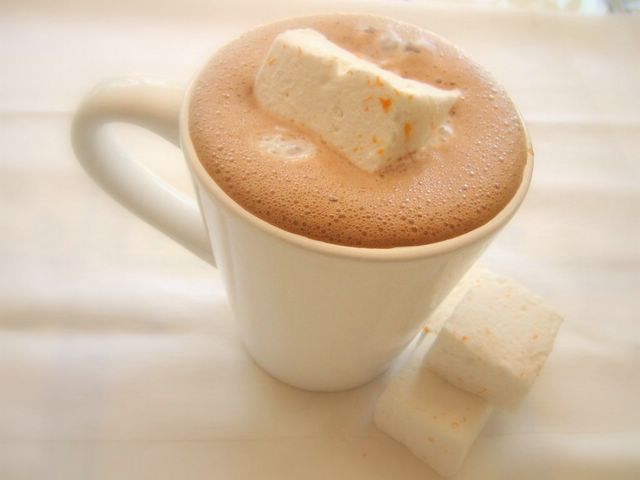Cooking School: Baked Custard
Custard is not really the most visually impressive of foods. It can be thick, thin, cooked on the stovetop or baked in the oven. A good custard will have a pale, yellowish or cream color and, if it is a baked custard, probably a slightly darker "skin" on top. Some people, like me, love it and some hate it. Creme brulee cleverly covers it up with some burnt sugar. The custard in this photo has a bit of skin, as you can see. But that is simply the way it is.
Baked custard is one of the two basic types of custard and it is simple to make. Beat eggs and sugar together, whisk in hot milk and bake in a water bath. The water bath insulates the custard, preventing it from reaching too high a heat and curdling. I have been as specific as possible in my recipe, below, but know that it is not a difficult process.
The hardest part is knowing when it is done. A custard like this should maintain a smooth, unblemished surface all through baking, so color is not a reliable indicator. You will know that it is done because it will jiggle all at once if you push the container. As though a single, huge drop has created it, the custard will ripple, but it will move symetrically. If different parts of the custard move independantly, it is not set yet. The custard may still look loose when it is done, but custards like this one should not look firm. You can always test it by inserting a sharp knife into the center. When the knife comes out clean, you can be sure it is done. Once you get the idea of what a proper jiggle looks like, you can use the same test for other baked custards, including cheesecake.
This custard is not too sweet with a nice, but subtle, vanilla flavor. I used low fat milk here, but whole will make a richer custard and skim will make a leaner one. You can steep a bean in the milk, or simply stir in 1 tsp of vanilla extract when you have removed the milk from the heat.
It is light, slightly eggy and has a delicate mouthfeel. In fact, when warm, it almost melts in your mouth. I personally think it's best warm, but it is excellent cold, too. You can store it in the refrigerator, covered, for a few days.
Baked Custard
3 cups milk
3 cups milk
4 eggs
1/2 cup sugar
1 tsp vanilla or 1/2 vanilla bean, split
1/2 cup sugar
1 tsp vanilla or 1/2 vanilla bean, split
Butter or lightly oil a 1-quart (4 cup) baking dish or ramekin. Place in a deep casserole or roasting pan. Fill pan with water until it comes about half way up the side of your ramekin. Remove ramekin.
Place casserole dish, with water still in it, in the oven.
Preheat fo 325F.
Put milk (whole or low fat) into a medium sauce pan over medium-low heat. If you're using a vanilla bean, place it in the milk. The milk will be ready when steam begins to rise from it, but before it boils. While you wait, prepare the eggs.
Place eggs into a large bowl and beat to combine. Beat in sugar and whisk until thorougly combined.
When the milk is steaming, pour about 2 tablespoons into the egg mixture, whisking constantly. Add about two more tablespoons, still whisking, followed by a few more. Slowly stream in the rest of the milk, whisking continuously. If you are using vanilla extract, stir it in.
Strain custard into prepared ramekin with a mesh sieve, which will remove the vanilla bean and any lumps. Carefully place it into heated waterbath.
Bake at 325F for 40-45 minutes, until a sharp knife inserted into the center comes out clean.
Allow to cool in waterbath for 15-20 minutes.
Serves 6, warm or cold.



<< Home